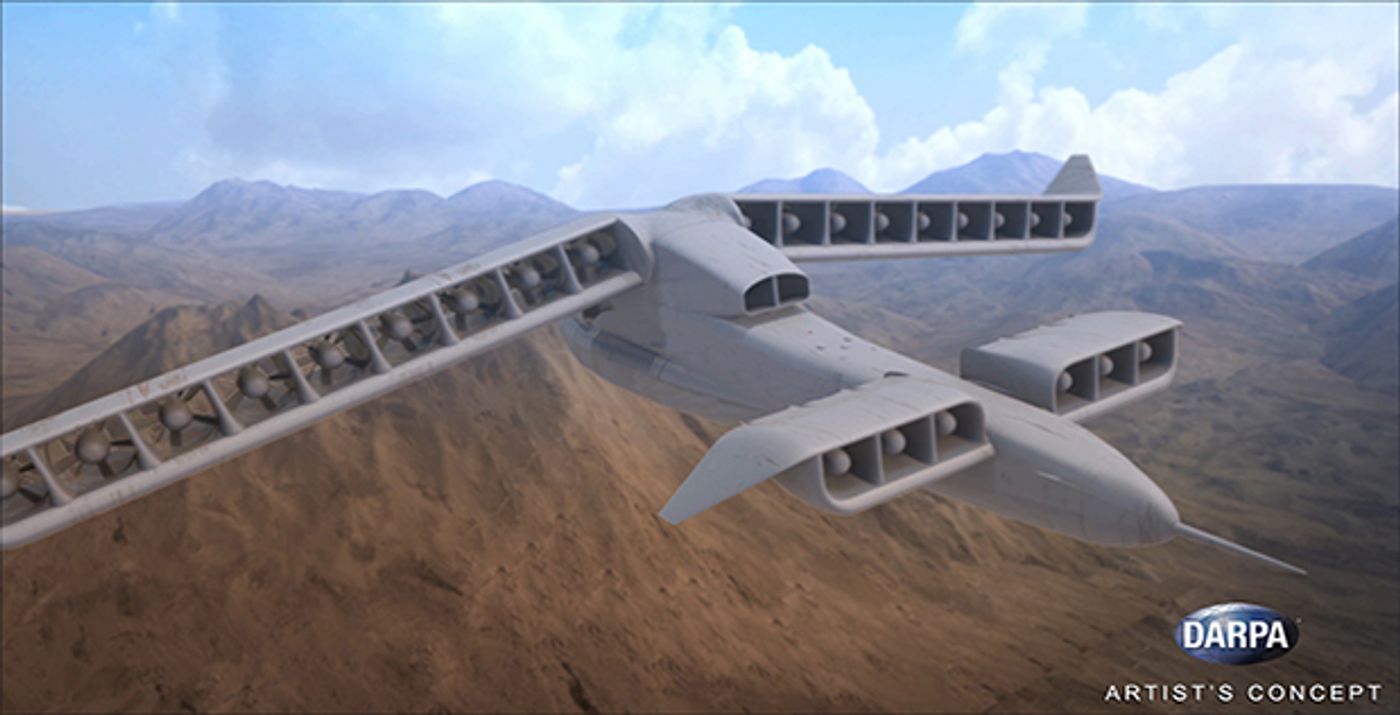DARPA's Latest Vertical Takeoff and Landing Plane Concept
Vertical takeoff and vertical landing are two physics quandaries that have long confused the world of avionics. Modern airplanes use powerful jet engines to hover over a landing surface, but DARPA is looking to take things to the next level without burning as much fuel to hover for a vertical takeoff or vertical landing.

Instead of jet engines, the new concept plane, which has been given the name VTOL X-Plane, calls for rotating wings that house a grand total of 24 powerful thrust propellers. Both the main wing and rear wing would have rotational capabilities, and would point the propellers to face the ground so that any thrust produced would be enough to suspend the 10,000-12,000-pound aircraft in mid-air.
“DARPA’s Vertical Takeoff and Landing Experimental Plane (VTOL X-Plane) program seeks to provide innovative cross-pollination between fixed-wing and rotary-wing technologies and by developing and integrating novel subsystems to enable radical improvements in vertical and cruising flight capabilities,” DARPA explains. “In an important step toward that goal, DARPA has awarded the Phase 2 contract for VTOL X-Plane to Aurora Flight Sciences.”
The second contract phase has been created and this means work on such a plane could continue. DARPA is now one step closer to making its dream plane. A 4,000 horsepower engine would be the power behind this workhorse, and powered by electricity, the propeller equipment would require approximately 3 megawatts of electricity.
DARPA notes that the aircraft would have a maximum airspeed of 300-400 knots. More specs reveal that this electric propeller lift-off method could yield a 75% aircraft hover efficiency rate, which is up from 60% from modern techniques. Moreover, a lift-to-drag ratio of 10 could be achieved, which would be up from 5-6 with modern techniques.
The awesome concept video for the VTOL X-Plane can be viewed below:
“This VTOL X-Plane won’t be in volume production in the next few years but is important for the future capabilities it could enable,” Project manager Ashish Bagai said. “Imagine electric aircraft that are more quiet, fuel-efficient and adaptable and are capable of runway-independent operations. We want to open up whole new design and mission spaces freed from prior constraints, and enable new VTOL aircraft systems and subsystems.”
NASA is reportedly also going to start working on some next-generation aircraft technology. Also dubbed X-Planes, these aircraft would be significantly quieter, more fuel efficient, and more modern in design. NASA is reportedly starting its efforts, which are being funded by the space agency's additional funding, on a new low-boom supersonic jet.
Such aircrafts, which are unmanned, would be beneficial to the United States military. There may be tons of uses for such an aircraft just waiting to be discovered.
Source: DARPA








